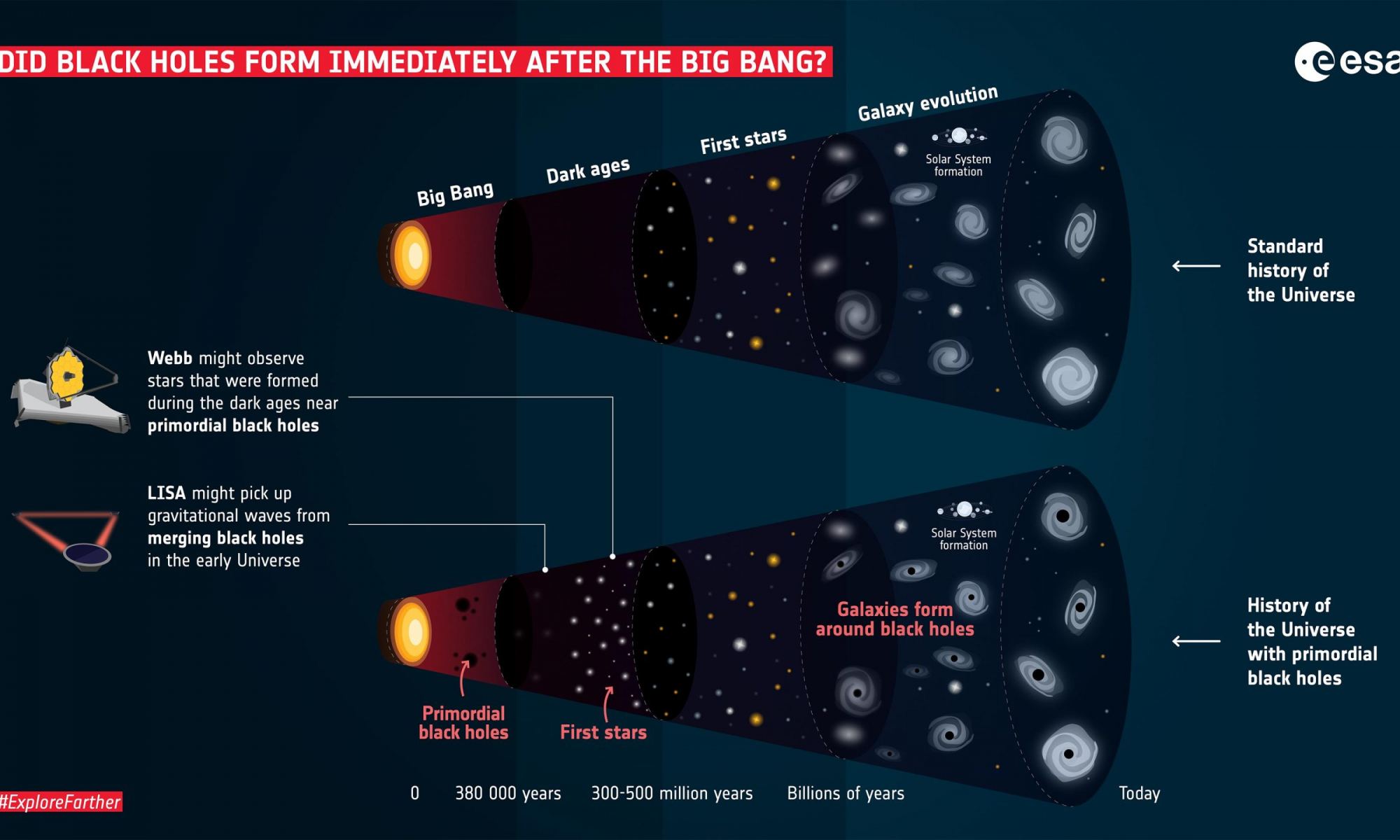It’s that time again. Time to look at a possible model to explain dark matter. In this case, a perennial favorite known as primordial black holes. Black holes have long been proposed as the source of dark matter. In many ways, they are the perfect candidate because they only interact with light and matter gravitationally. But stellar-mass black holes have been ruled out observationally. There simply aren’t enough of them to account for dark matter.
Primordial black holes are a possible solution. Unlike stellar black holes that would have a mass larger than the Sun, primordial black holes could have the mass of a mere planet or less. A planet-mass black hole would be smaller than an apple, and an asteroid-mass black hole could be smaller than a grain of sand. They are known as primordial black holes because they are thought to have formed during the early moments of the universe. The idea hasn’t been tremendously popular, and we have no observational evidence that primordial black holes exist, but a new study has looked at the idea once again.
This study tweaks the original model slightly, proposing that primordial black holes with a range of masses formed almost instantly after the big bang. From their model, they show that some of these black holes could form the seeds of the first stars, and the largest primordial black holes could have rapidly grown into supermassive black holes by gobbling up surrounding hydrogen and helium. This would explain how galaxies and their supermassive black holes seem to have formed so early in the universe. Finally, the smallest primordial black holes would be common enough to explain dark matter.

Being able to explain black holes, galactic evolution, and dark matter all in one would be a tremendous theoretical boon. But the idea is useless unless the model can be proven. But the authors think the James Webb telescope might be able to do just that. One of the things about primordial black holes is that they likely emit light via [Hawking radiation](/post/great-escape/). According to Hawking’s model, tiny black holes should cause an excess of infrared light in the early universe, which the Webb telescope should be able to pick up.
So if the James Webb Space Telescope does launch this week as planned, and all goes well, we should be able to put this idea to the test. It would be a great holiday gift to finally understand what dark matter truly is.
Reference: Cappelluti, Nico, Günther Hasinger, and Priyamvada Natarajan. “Exploring the high-redshift PBH-LCDM Universe: early black hole seeding, the first stars and cosmic radiation backgrounds.” arXiv preprint arXiv:2109.08701 (2021).

